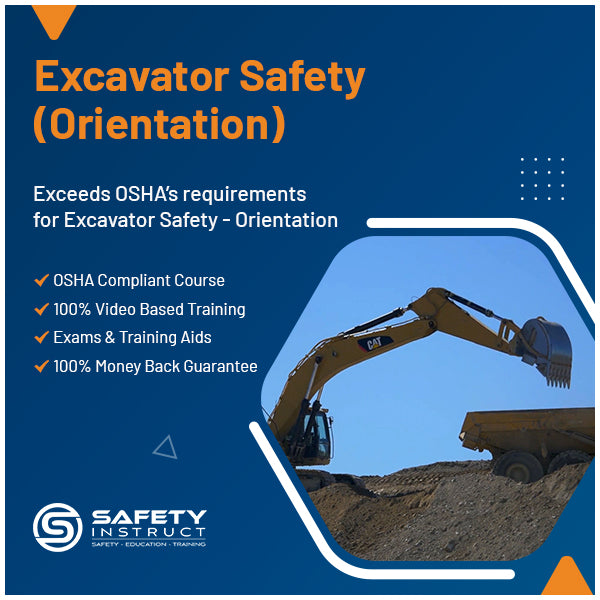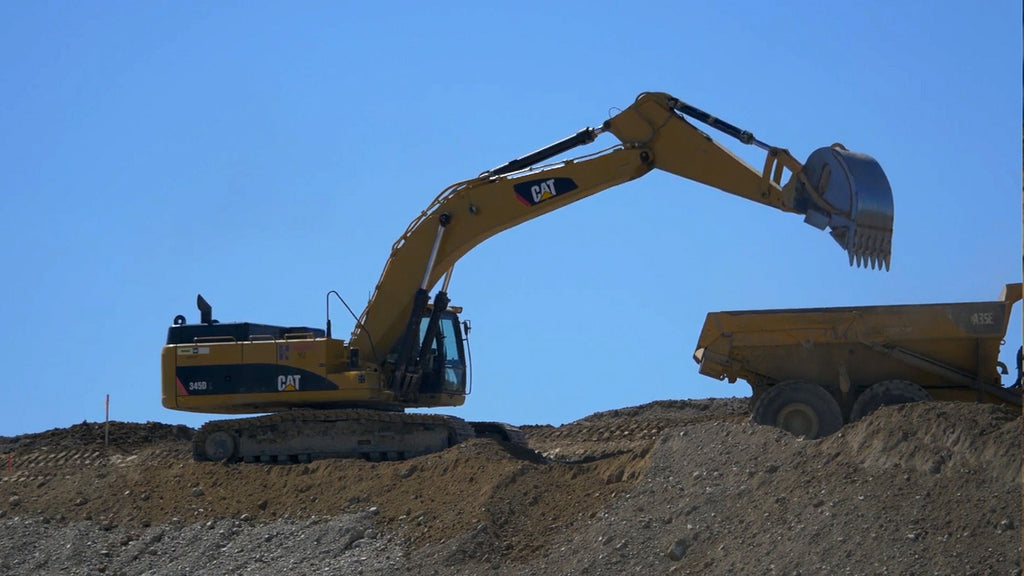No Products in the Cart
Click Here to Schedule a FREE Consultation
Phone: 866-943-6887 Email: sales@safetyinstruct.com



Construction projects center around the ability to demolish buildings, move earth and carry heavy objects. The machine most often used for this is the Excavator. An Excavator saves countless hours at construction sites by quickly being able to move earth, dig, haul away debris, break ground, and many other things. But each of these tasks involves risk and to work safely you must understand how the excavator operates and how to stay safe.
Excavator Components
An excavator is one of the large pieces of equipment on a construction site, but it is made up of several components and pieces. There is the car body, the track system, the upper structure, the cab, the boom and tick and the attachments. Each one of these elements has its own functions and hazards. You must inspect each of these elements before you begin any task with an excavator.
Operator Responsibility
At the end of the day, safety is your responsibility. It comes down to discipline, being aware, and knowing both your machine and its hazards as well as how to work around people and other moving objects. But in addition to operating the machine safely, you must understand the hazards involved in entering and exiting the excavator and how to do it safely. Almost all excavator accidents happen when a worker is not paying attention, or they are cutting corners by bypassing safety protocol. The only way to stay safe is to be safe.
Workplace Awareness
Many excavator accidents and injuries stem from other workers around the machine. Before you begin any task with an excavator be sure to review your working conditions to know what hazards might be present know the location of your coworkers, the path you need to travel and what other machines might enter your path. Know your danger area well and use flagging tape and barricades when you need to. Power lines can also cause a hazard, and you must know what to do when you accidentally hit one or come in contact with one. You should also be familiar with hand signals in case you are unable to hear what another worker might be saying. And you need to know how to safely drive the excavator up and down inclined. Being aware is the only way to stay safe.
Incident Prevention
Before you begin any task with an excavator, you need to assess several things: the depth of the excavation, where the soil will be placed, how the excavation will be backfilled, and what the soil conditions are. Always call before you dig to find out about potential buried lines and other materials which might be present. Know where the edges and drop-offs are and if needed to use barricades to alert you to them. You must also know how to keep the excavator stabilized when working on a slant. Work with your supervisor to understand the extent of your task and the limitations of the excavator based on the attachment being used.


